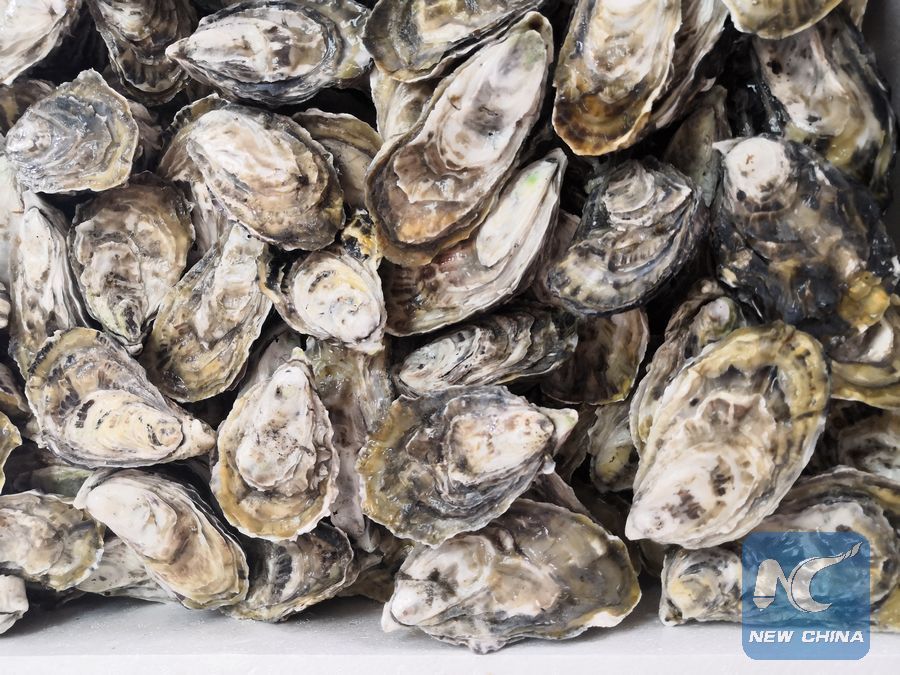
Photo taken on Oct. 29, 2018 shows fresh oysters at Tetelestai, an oyster producing company, in Namibia's coastal town Walvis Bay. (Xinhua/Shi Liwei)
WINDHOEK, Nov. 1 (Xinhua) -- As China becomes Namibia's biggest export market, local-based enterprises in Namibia are at the helm of the increased trade volumes.
The dawn of light has just arrived over Namibia's coastal town Walvis Bay. At Tetelestai, an oyster producing company, supervisor Rino Katjingisiua was monitoring the growth and quality of Pacific oysters. The oysters are predestined for China amongst other markets.
"I have to ensure the oysters are worked on time," said 36-year-old Katjingisiua, inspecting the farm produce.
Established in 2006, to-date, Tetelestai specializes in growing Pacific oysters, trading in both fresh and frozen products.
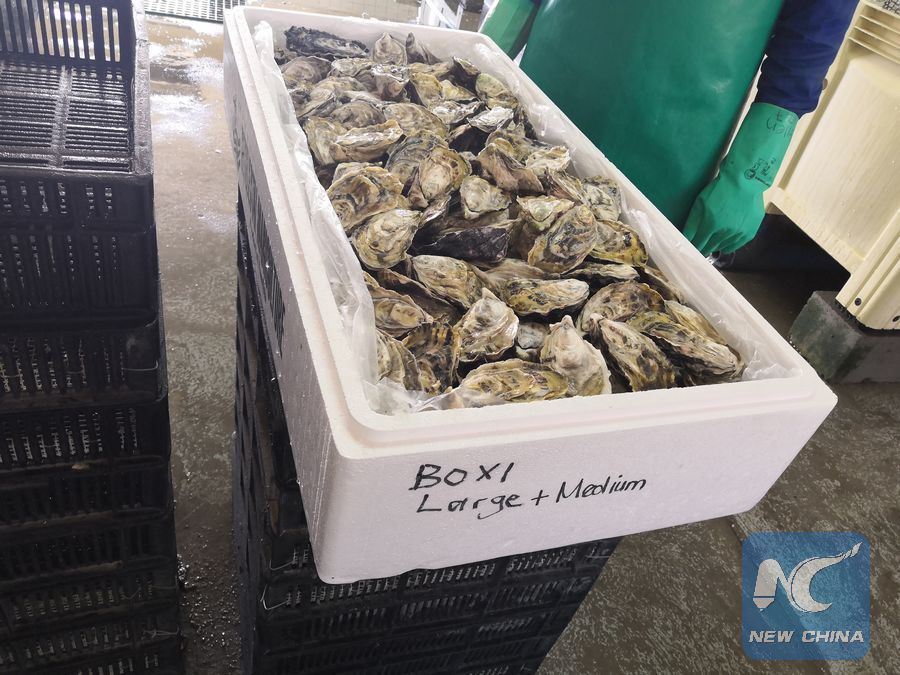
Photo taken on Oct. 29, 2018 shows packaged oysters at Tetelestai, an oyster producing company, in Namibia's coastal town Walvis Bay. (Xinhua/Shi Liwei)
"At the moment, we concentrate on growing Pacific oysters from juvenile stage (around 30 grams) up to market size, which is between 40g and 150g," Koos Blaauw, co-owner and managing director of Tetelestai told Xinhua in a recent interview.
According to Blaauw, the markets for fresh live oysters are mainly Chinese destinations including Beijing, Guangzhou, Shanghai as well as Hong Kong.
On average, export volumes of Tetelestai brand products to China range between 20,000 to 40,000 units per month.
Statistics in June by Namibia Statistics Agency shows that China has become Namibia's biggest export market, surpassing countries like South Africa whom Namibia previously traded with extensively.
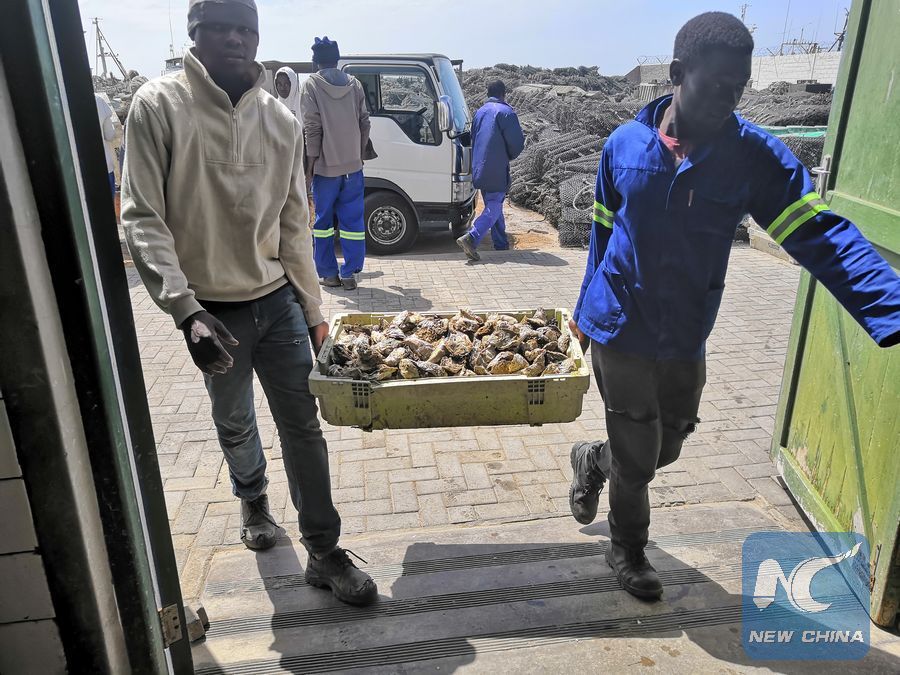
Workers transport oysters at Tetelestai, an oyster producing company, in Namibia's coastal town Walvis Bay on Oct. 30, 2018. (Xinhua/Shi Liwei)
The Namibian-based enterprise counts on its bountiful Pacific oysters in penetrating the Chinese market, to where they export the majority of the locally cultivated oyster products.
"We had a market from the start, but it is only recently that the demand increased as word spread about Namibia and the quality of our oysters," Blaauw said.
According to him, the Chinese market has created opportunities for the business.
"We have a low population in Namibia, and the local market cannot consume so much. So as one of our main export markets, it has assisted us in expanding and stabilizing our business. Also, as we get more Chinese people visiting or working in Namibia, news about our name and the quality of our oysters is spreading and increases our sales in return," he added.
Partnering with Beijing Hi-Technology Energy Investments (Pty) Ltd has also been instrumental in expanding trade.
"It assists us in better understanding the Asian market and also helps to break down language and trade barriers," according to Blaauw.
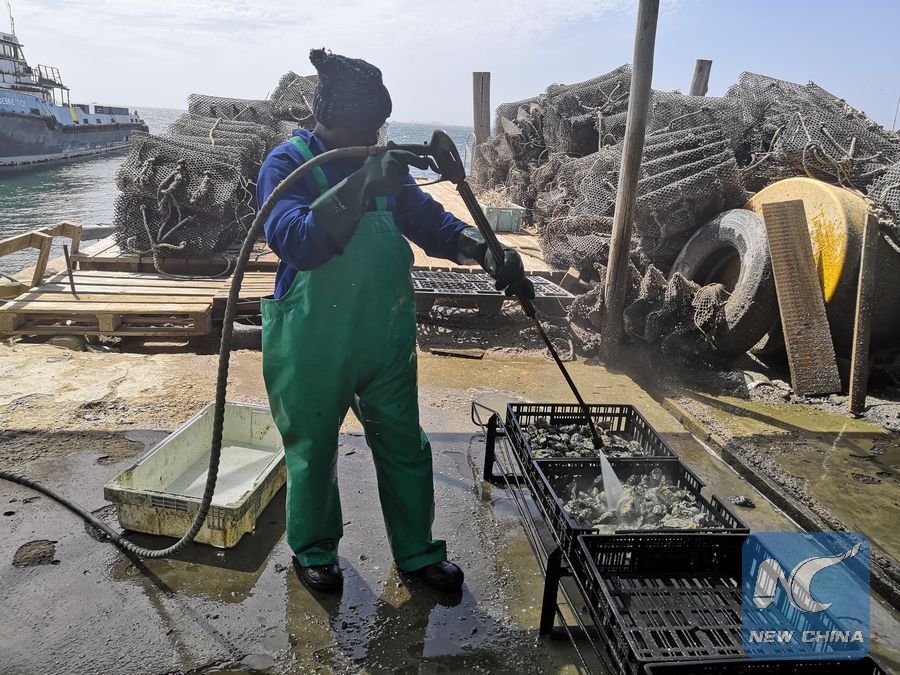
A worker cleans oysters at Tetelestai, an oyster producing company, in Namibia's coastal town Walvis Bay on Oct. 30, 2018.(Xinhua/Shi Liwei)
With the recent trade developments between Namibia and China, the company projects that the market share and demand for oysters may increase. The new partnership is also envisaged to yield growth.
"Even though still in the early stages of the partnership, we expect the surge in market share to increase job opportunities in the company as well as lead to training and more experience for our employees in different fields," Blaauw said.
Employees like Katjingisiua are hopeful that human resource development opportunities will further nurture their professional skills.
"I plan to do the best I can at my current job and to improve myself further," said an optimistic Katjingisiua.
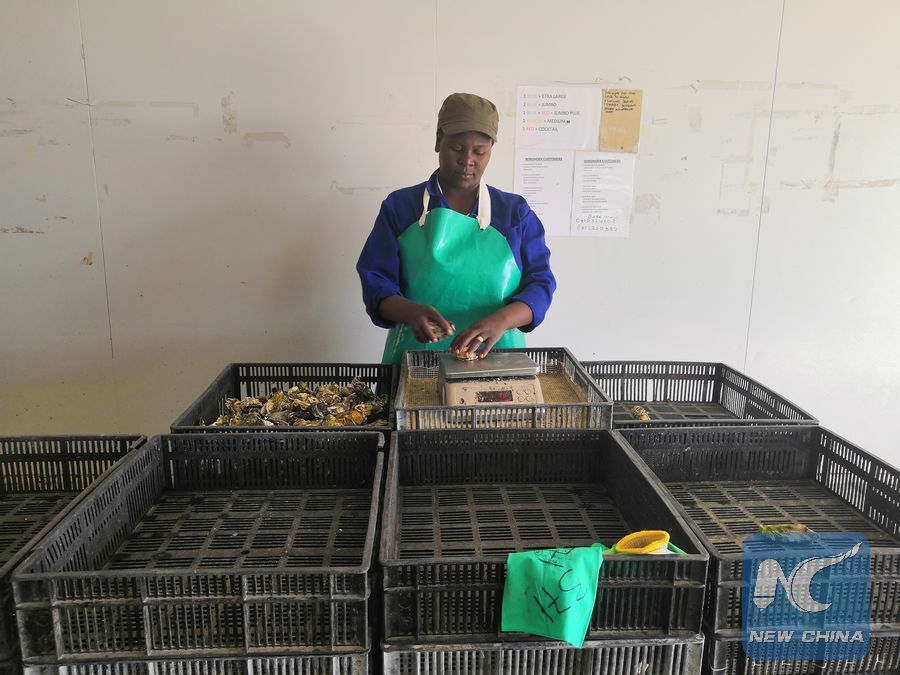
Workers weighs oysters at Tetelestai, an oyster producing company, in Namibia's coastal town Walvis Bay on Oct. 30, 2018. (Xinhua/Shi Liwei)
Meanwhile, plans are underway to expand the farm to produce a higher output of Pacific oyster over the next year. "After that, we will also look at farming other species aimed at the Asian market," said Blaauw.
Moreover, apart from penetrating the Chinese market, Blaauw said that the company is also set to increase export volumes.
"We are now also registered with the Russian authorities and plan to export to Russia soon. For frozen oysters, we mainly export to South Africa. Then we also supply most of the local market in Namibia," he said.
Although the company faces challenges such as distance and high transportation cost in exporting to the Asian market and an import levy on oysters from Namibia into China (assessed at 18 percent), Blaauw said the enterprise is committed to increasing their market share in the Asian market.
"Our aim is to be recognized by the Asian market as one of the top-quality oyster producers in the world," he said.
The company currently employs 21 staff members, comprising two staff members in administration and office, two supervisors and the employees working on the oysters daily and harvest it for the market.

